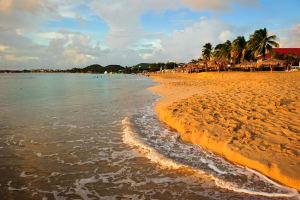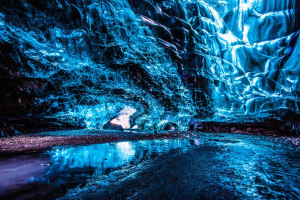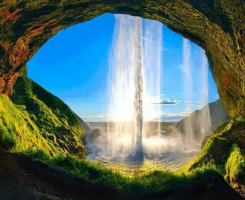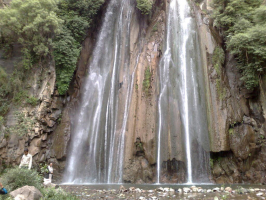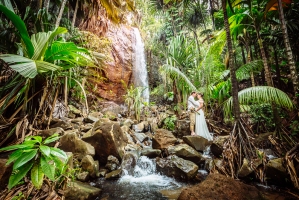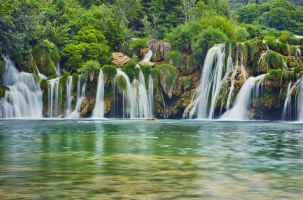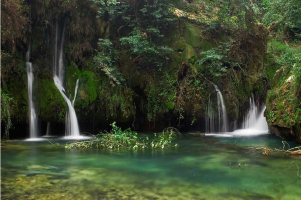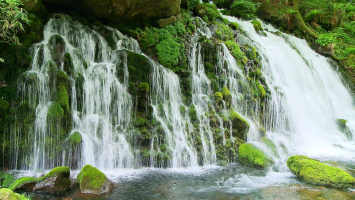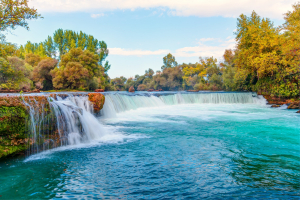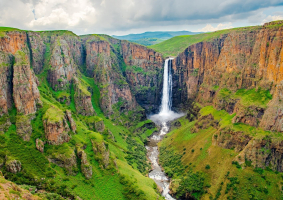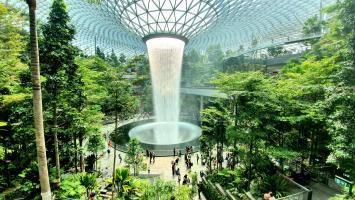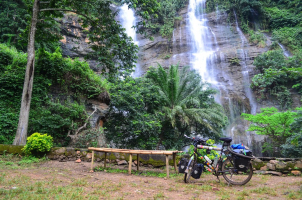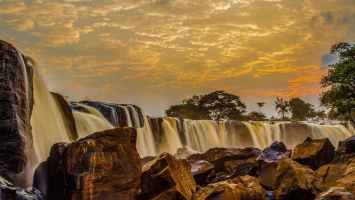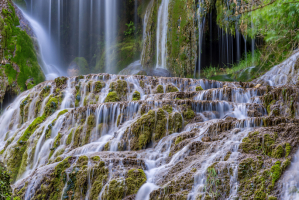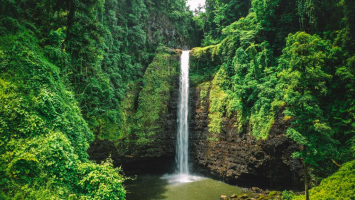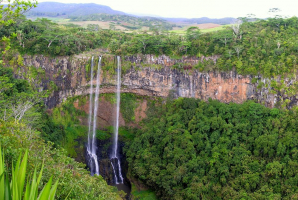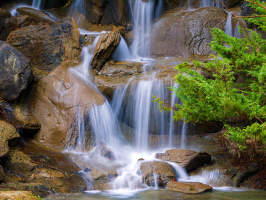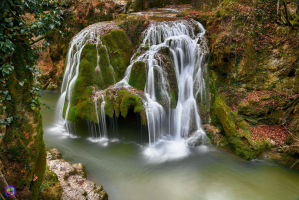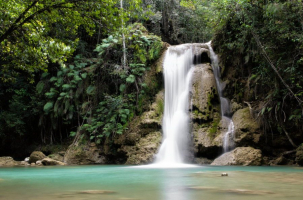Top 10 Most Beautiful Waterfalls in Iceland
No trip to Iceland is complete without seeing at least one of the country's breathtaking waterfalls. It waterfall has its own particular personality, and each ... read more...captivates visitors with its distinct shape, size, sound, and surrounding natural characteristics. Each waterfall, like many historic sites in Iceland, has its own story, whether from history or legend. These include stories of historical significance, tragedy, and even love, all of which help to bring to life the ever-changing and expanding landscape of the land of fire and ice. Let's find out the Most Beautiful Waterfalls in Iceland below!
-
Seljalandsfoss waterfall is well-known and regarded as one of Iceland's best. Seljalandsfoss waterfall is one of Iceland's most photographed waterfalls, located on the south coast about 80 miles (128 kilometers) from Reykjavik. Because Skogafoss is only 18.5 miles (30 kilometers) away, both can be seen on the same day.
At 197 feet (60 meters) tall, the waterfall is narrow and tall, and it has the unusual feature of an area where tourists may go behind it, allowing them to capture some stunning images. Seljalandsfoss waterfall is one of Iceland's most beautiful and must-see attractions for everyone visiting the nation. In May 2017, plans to construct an 8-meter-high, 2000-square-meter information center near the waterfall sparked debate in Iceland. Opponents of the proposals claimed that the structure would obscure the view of the waterfall and disrupt the natural beauty of the area.
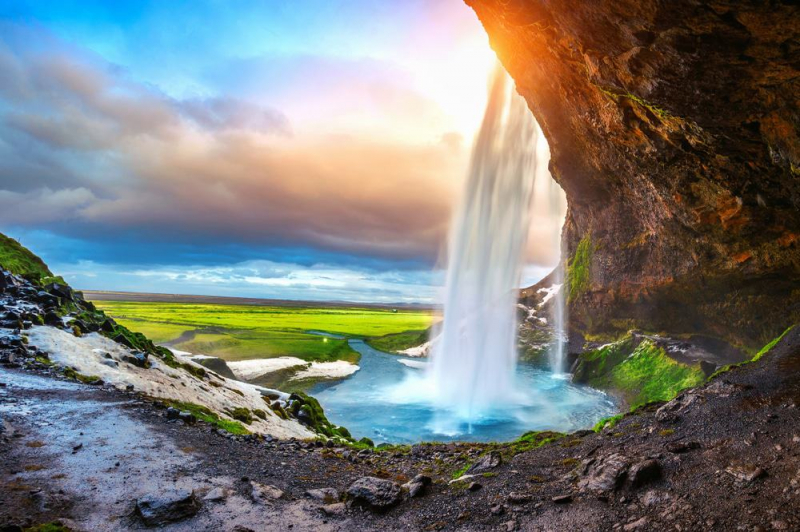
via: Adventures.com 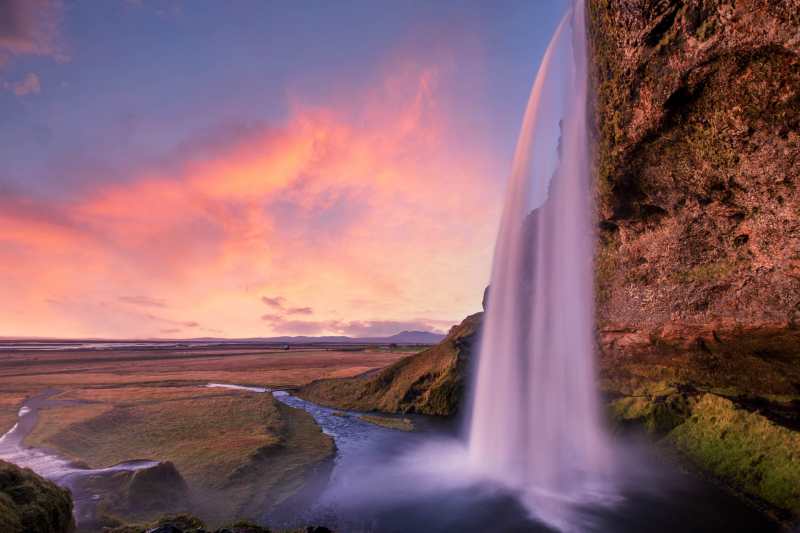
via: Alexios Ntounas Photography -
Skógafoss is a waterfall on the Skógá River in Iceland's south, along the rock that marks the old coastline. After the coastline receded (it is now about 5 kilometers (3 miles) from Skógar), the previous sea cliffs remained parallel to the coast for hundreds of kilometers, forming a clear demarcation between the coastal lowlands and the Highlands of Iceland.
Skógafoss is one of Iceland's largest waterfalls, with a breadth of 25 meters (82 feet) and a plunge of 60 meters (200 ft). On sunny days, a single or double rainbow is usually visible because of the amount of spray produced by the waterfall. The first Viking settler in the area, rasi órólfsson, is said to have buried a treasure in a cave behind the waterfall. According to folklore, residents discovered the treasure years later but were only able to touch the ring on the side of the chest before it vanished. According to reports, the ring was presented to the local church. The original church door ring can now be found in Skógar's museum. At the eastern side of the waterfall, a hiking and trekking trail leads up to the pass Fimmvörðuháls between the glaciers Eyjafjallajökull and Mýrdalsjökull. It goes down to Þórsmörk on the other side and continues as the Laugavegur trail to Landmannalaugar. A 430-step staircase leads up the slope to the top of the waterfall.
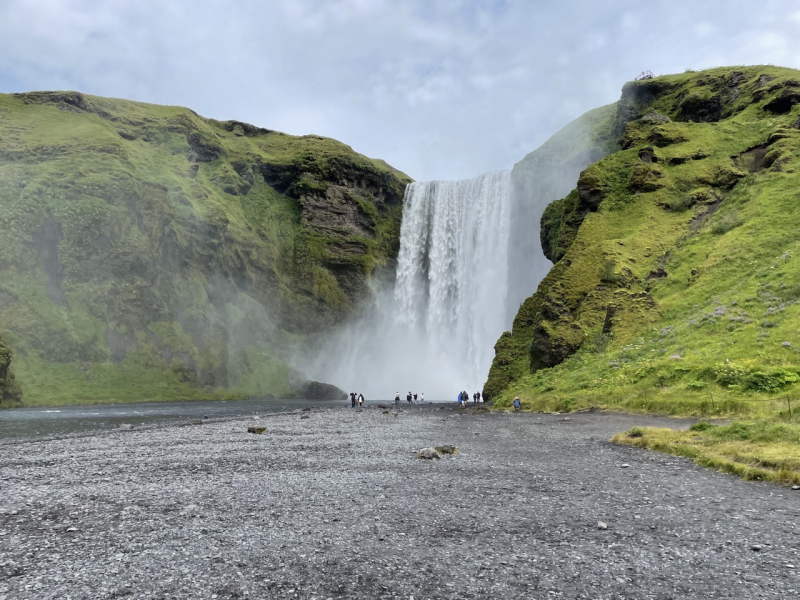
via: Lattes & Runways 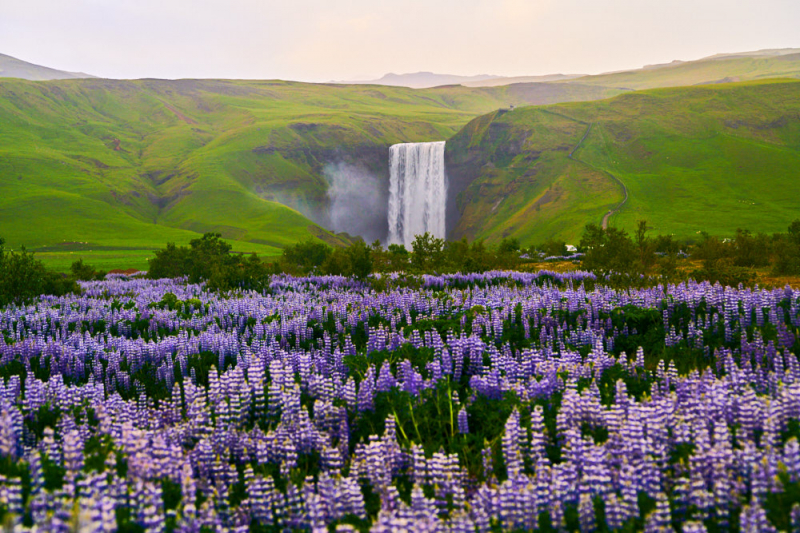
via: Iceland Trippers! -
Gullfoss Waterfall, widely regarded as the most famous of Icelandic waterfalls, is located on the famous Golden Circle, Iceland's most popular tourist circuit. The Geysir Geothermal Area and Thingvellir National Park are also included in this circle. Gullfoss waterfall in South Iceland is fed by the Hvita glacial river and cascades 105 feet (32 meters) over two stages into a small river canyon. In clear conditions, you can even stroll close enough to feel the water spray on your face. In the summer, the waterfall averages 141 cubic meters (5,000 cu ft) per second and 80 cubic meters (2,800 cu ft) per second in the winter. The highest flood measured was 2,000 cubic meters (71,000 cu ft) per second.
There was much conjecture about using Gullfoss to generate power during the first part of the twentieth century and for a few years into the late twentieth century. During this time, the waterfall's proprietors, Tómas Tómasson and Halldór Halldórsson rented it out indirectly to foreign investors. However, the investors' endeavors were unsuccessful, owing in part to a shortage of funds. The waterfall was eventually sold to the Icelandic government and is now protected.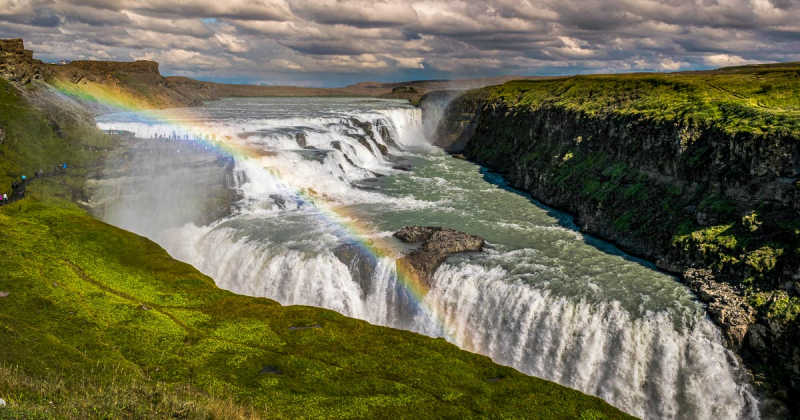
via: Arctic Adventures 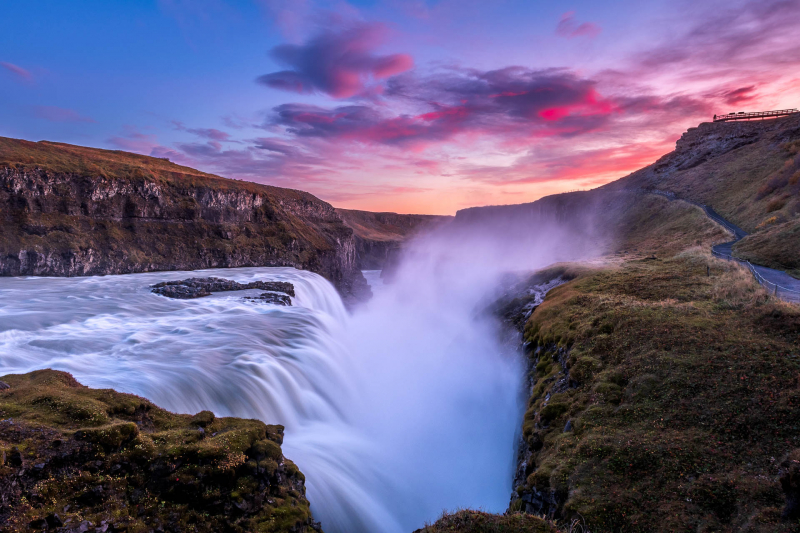
via: Alexios Ntounas Photography -
Godafoss waterfall is the most famous of the Skjalfandafljot waterfalls and one of the most famous waterfalls in Iceland, at 39 feet (12 meters) high and 98 feet (30 meters) broad. It's the only one that appears on the standard Diamond Circle route. It is about 45 minutes from Akureyri, Iceland's second-largest city, and is located along the country's primary ring road at the junction of the Sprengisandur highland road.
The name of the waterfall is not entirely clear. The name can be rendered as "waterfall of the go (pagan idols)" or "waterfall of the goi (chieftain)" in modern Icelandic. According to the Sagas, chieftain Thorgeir Ljosvetningagodi resolved a religious problem in Iceland by tossing the Old Norse Gods' idols into the falls. This reflected the country's conversion to Christianity and earned the location the moniker "The Waterfall of the Gods". Those who view the breathtaking majesty of the falls will agree that the name is appropriate.
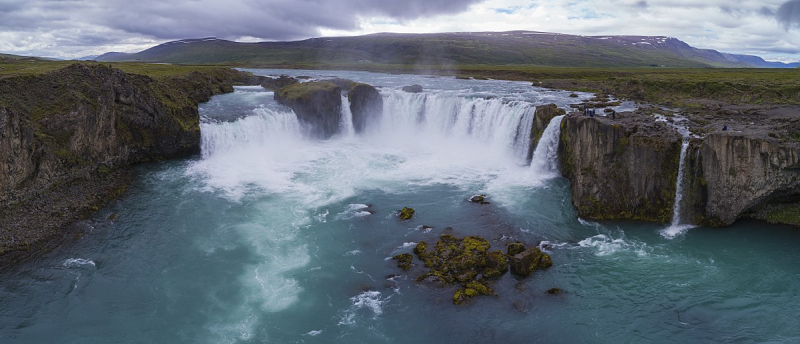
via: Wikipedia 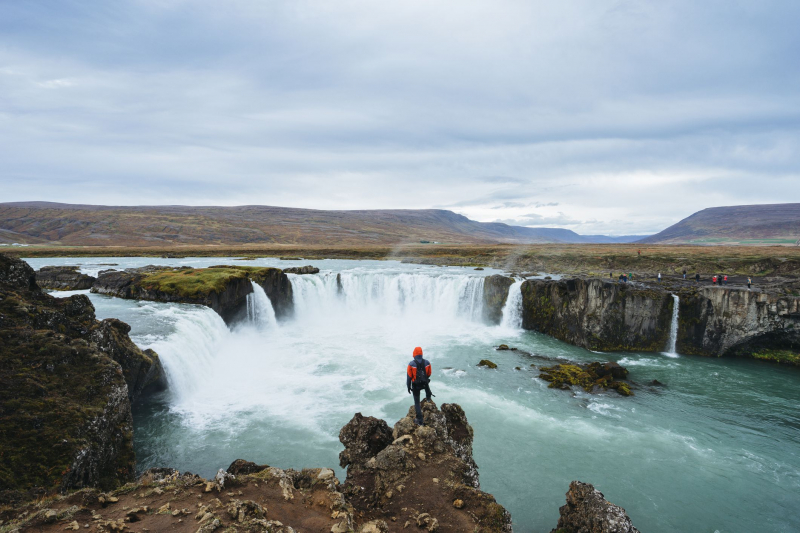
via: TripSavvy -
This amazing waterfall may be found in the Skaftafell Nature Reserve in Southeast Iceland, which is part of the Vatnajokull National Park. Svartifoss, which translates to "black waterfall", is one of the park's most popular attractions. The name comes from the stark contrast between the white water and the dark hexagonal basalt columns. Sharp boulders that have broken from the columns sit at the base of the falls, giving the cascades an unearthly feel.
This waterfall's base is notable for its sharp rocks. New hexagonal column pieces break off faster than the falling water wears the sides down. These basalt columns have influenced Icelandic architects, most notably in the Hallgrmskirkja church in Reykjavik, the ceiling of the National Theatre, and sculptor Richard Serra's iconic Milestones on Videy island.
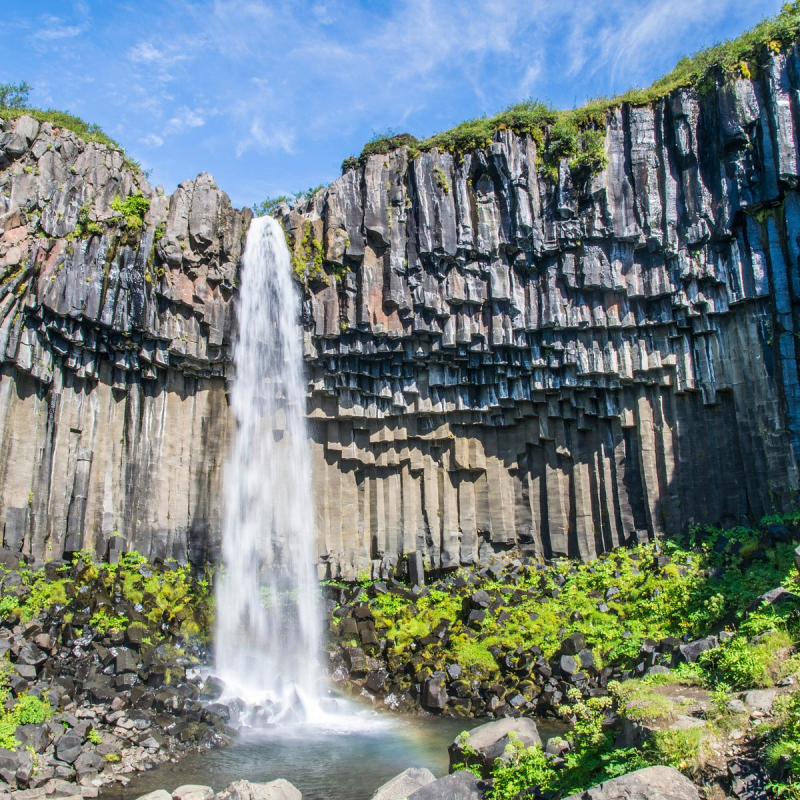
via: Tripadvisor 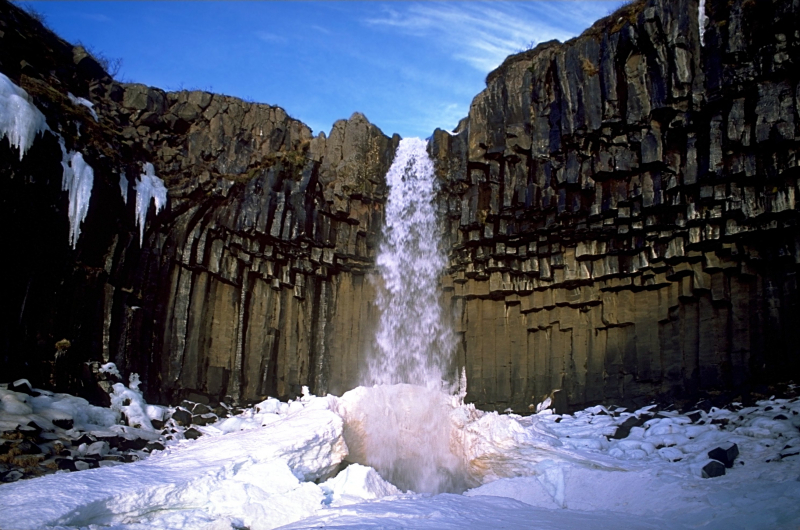
via: Wikipedia -
Hraunfossar is a series of waterfalls formed by rivulets streaming over a distance of about 900 meters out of the Hallmundarhraun, a lava field that flowed from an eruption of one of the volcanoes lying under the glacier Langjökull. The waterfalls pour into Hvítá (Borgarfjörður), from ledges of less porous rock in the lava. The name comes from the Icelandic word for lava (hraun) and the word for waterfalls (fossar). The Hraunfossar are situated near Húsafell and Reykholt and the Víðgelmir lava tube is close by. The Hraunfossar waterfall, though peaceful and serene, is widely considered one of the most spectacular in Iceland. The location is also very convenient for waterfall hunters, as it sits right beside Barnafoss waterfall, another dramatic waterfall.
Barnafoss is a waterfall that is literally a stone's throw upstream from Hraunfossar. The waterfall of the children gets its name from an accident that is claimed to have occurred here in the past. There was a natural bridge across the waterfall, and two children from a nearby farm died crossing the river on it. Following that, the bereaved mother had the bridge demolished.
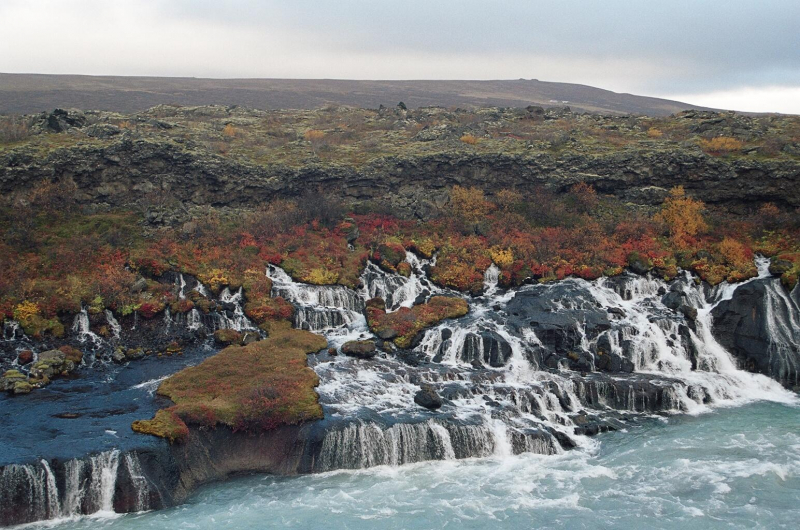
via: Wikipedia 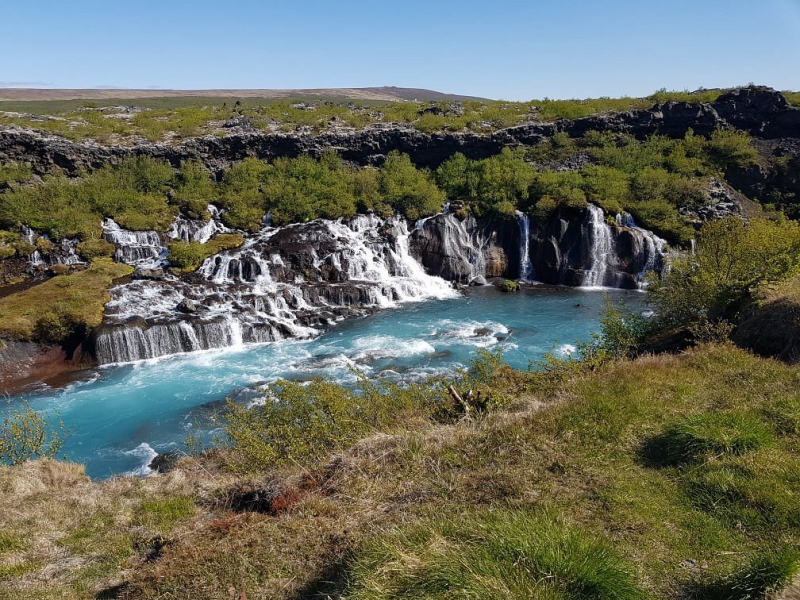
via: TripAdvisor -
Kirkjufellsfoss ("Church Mountain Falls") was a short but stunning waterfall located on the north side of the Snaefellsnes Peninsula, near the magnificent Kirkjufell mountain. Photographers will appreciate capturing the tranquillity of the lake against the majestic mountain in the background. It takes 2.5 hours to get here from Reykjavik. The falls are only a 5-minute walk from the parking area. Kirkjufellsfoss is marked with a blue sign. You can already see the double waterfall, but for the finest photo, walk towards Kirkjufellsfoss, cross the river, and walk down till you have the perfect perspective.
The Kirkjufellsfoss waterfall is one of the best in Iceland, especially when seen at midnight. It's also a lovely sight in the winter when it's covered in snow and ice and sparkles beneath the beautiful northern lights. The river Kirkjufellsá runs down from the volcano Helgrindur and has three waterfalls in it, all called Kirkjufellsfoss.
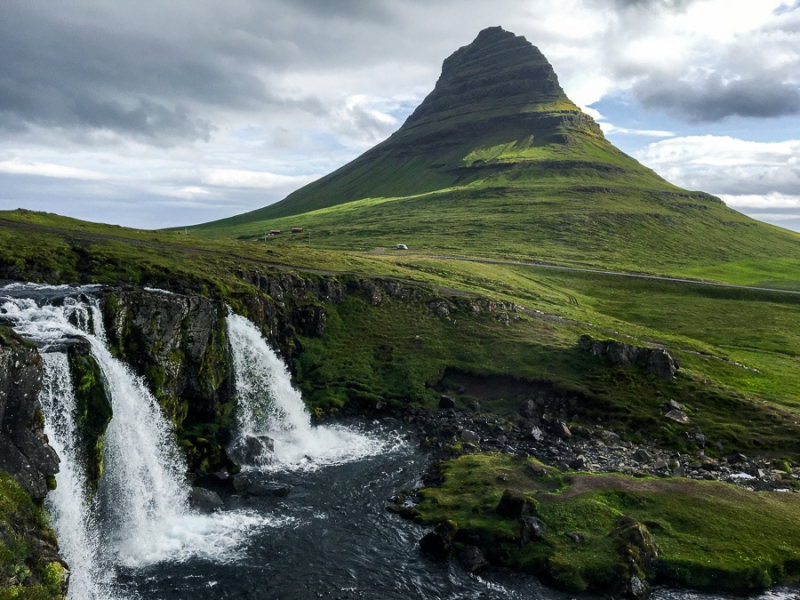
via: The World Travel Guy 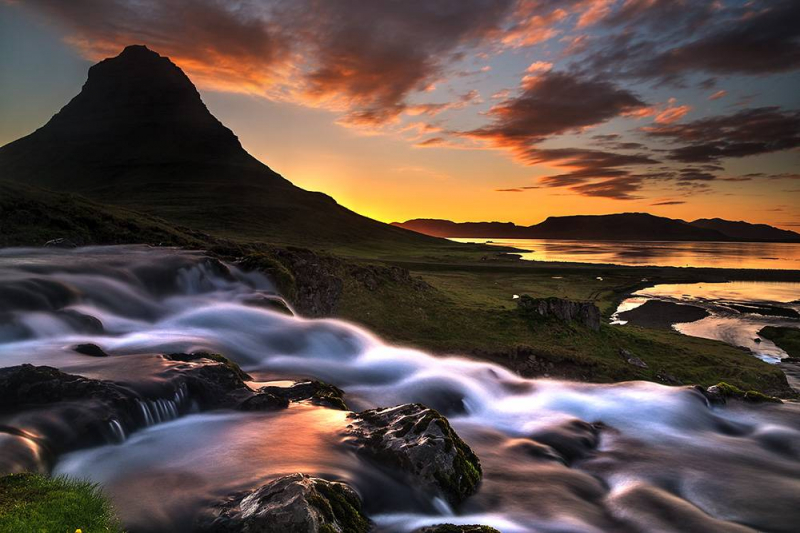
via: Iceland Aurora -
Glymur waterfall, located near Reykjavik, is Iceland's second tallest waterfall, with a cascade of 198 meters. It was long thought to be the tallest until it was overtaken in 2011 by Morsárfoss, a freshly measured waterfall near Morsárjökull. As a result, it's one of the best waterfalls to view on a short trip to Iceland. It consists of multiple thin falls of varying sizes cascading down a steep face. It is located at the back of the Hvalfjörur.
Glymur waterfall is 44 miles (71 kilometers) from the city, followed by a 2-hour climb through spectacular landscape including river crossings and a walk into a cave, making it an ideal outing for photographers. The waterfall is accessible via a parking lot at the end of the road. Hikers can see the waterfall from established pathways on the east bank of the Botnsá River.
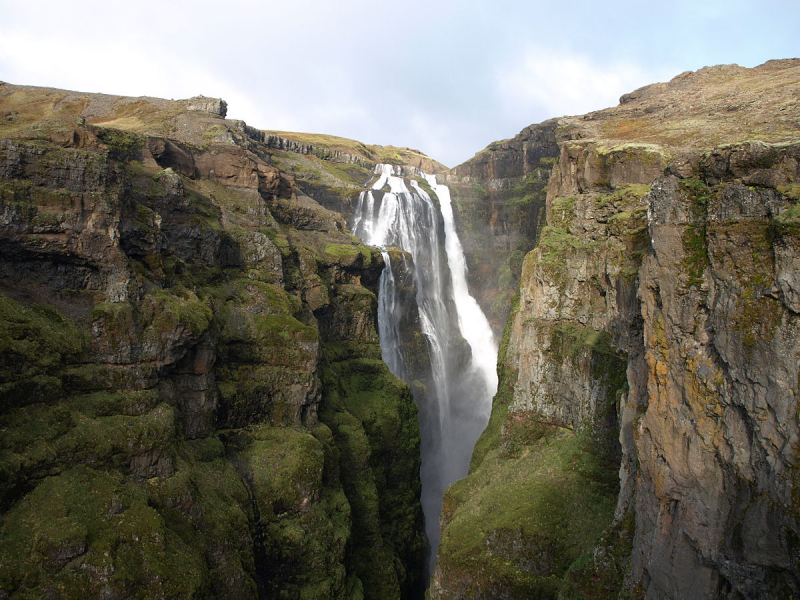
via: Guide to Iceland 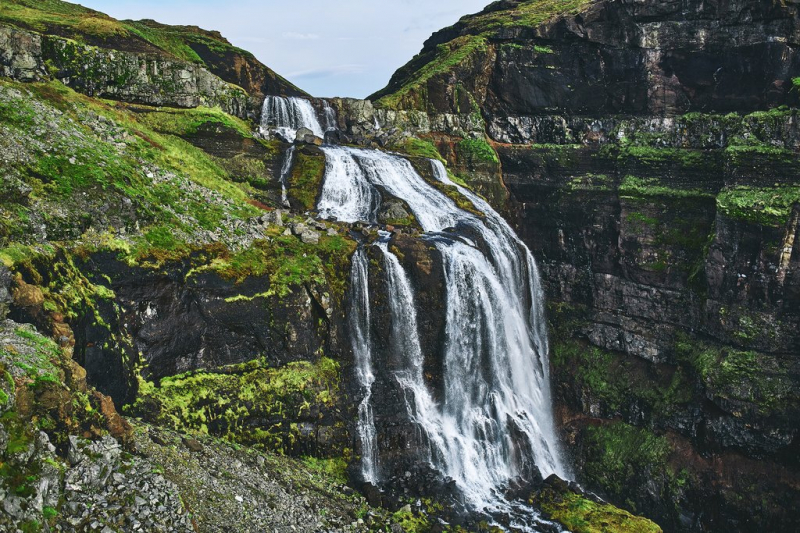
via: KimKim -
Dettifoss is the most powerful waterfall in Iceland and the second most powerful waterfall in Europe after the Rhine Falls. It is located in Vatnajökull National Park in northeast Iceland. This makes it one of Iceland's top waterfalls.
It's 330 feet (100 meters) broad and sends an astonishing 7,000 cubic feet (200 cubic meters) of water every second falling down a 144-foot (44-meter) cliff in Northern Iceland's Vatnajokull National Park. The waterfall of Dettifoss is located on the Jökulsá á Fjöllum river, which flows from the Vatnajökull glacier and collects water from a broad area in Northeast Iceland. The sound of the water flowing down the gorge is one of the most stunning aspects. Because of the sediment-rich runoffs, the water is grey-white in hue.
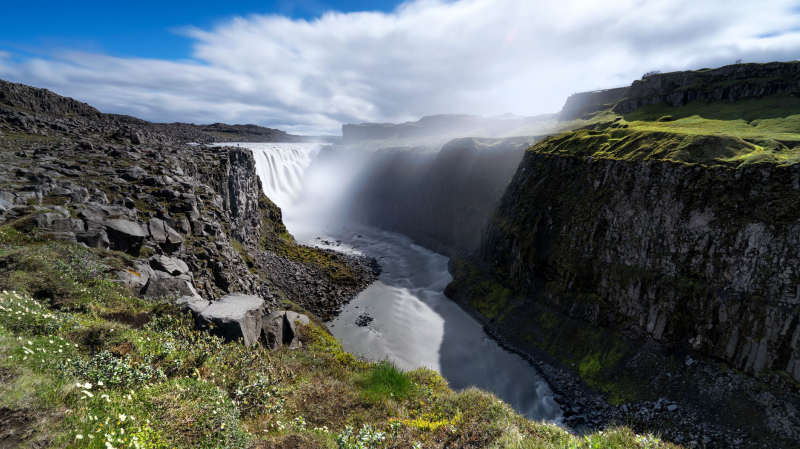
via: TripSavvy 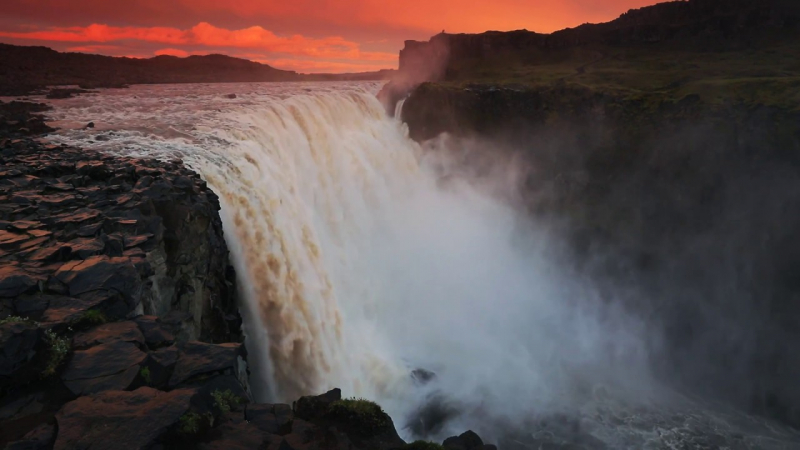
via: Guide to Iceland -
Haifoss is one of Iceland's tallest waterfalls, standing over 400 feet (122 meters). When it was discovered, it was supposed to be the tallest structure in Europe. Taller falls have since been discovered in the country and elsewhere in Europe. Háifoss is a waterfall in southern Iceland near the volcano Hekla. Granni's waterfall is nearby. The Fossá River, a tributary of the Jórsá, falls here at a height of 122 meters.
This waterfall is only accessible by 4x4 in South Iceland's Thjorsardalur Valley. To reach Háifoss waterfall from Reykjavík in the summertime you can rent a car and drive east on ring-road 1, pass Selfoss town and take a left turn on road 30 until you reach Árnes, where you make a right turn on road 32. Just before you reach the power plant Sultartangi, you turn left on a gravel road, which leads to Háifoss waterfall. On a Golden Circle road trip, Haifoss is a wonderful detour.
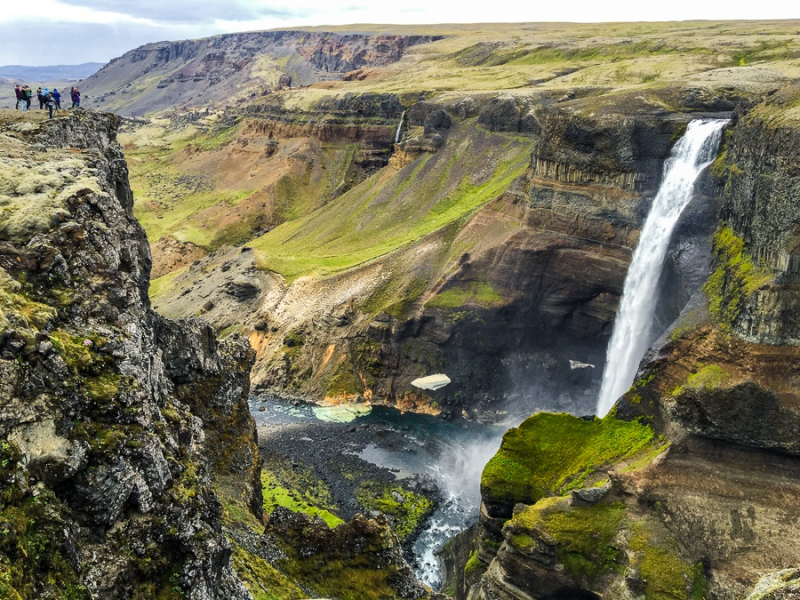
via: The World Travel Guy 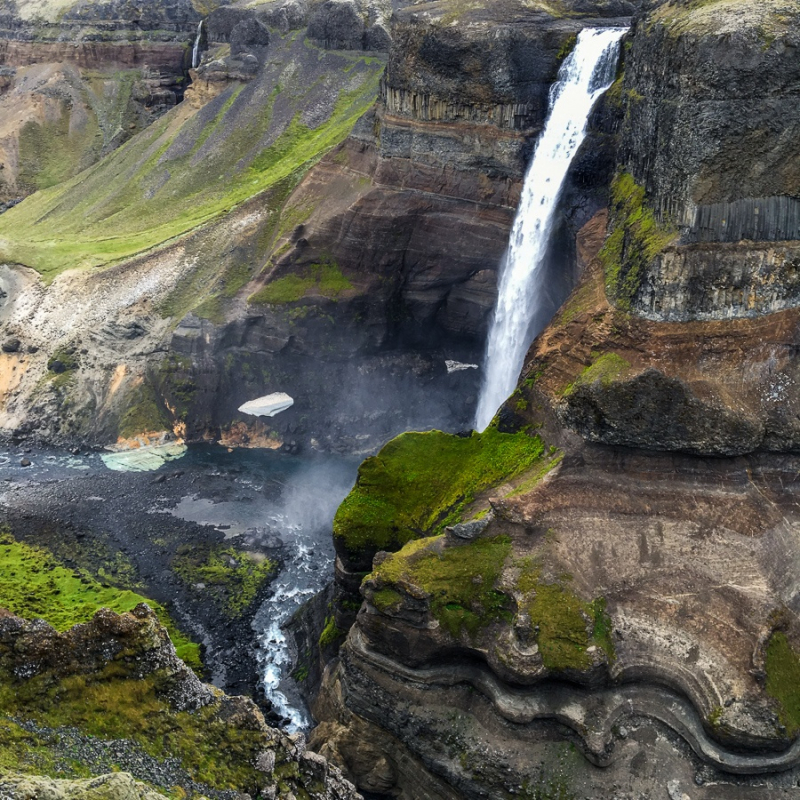
via: The World Travel Guy












